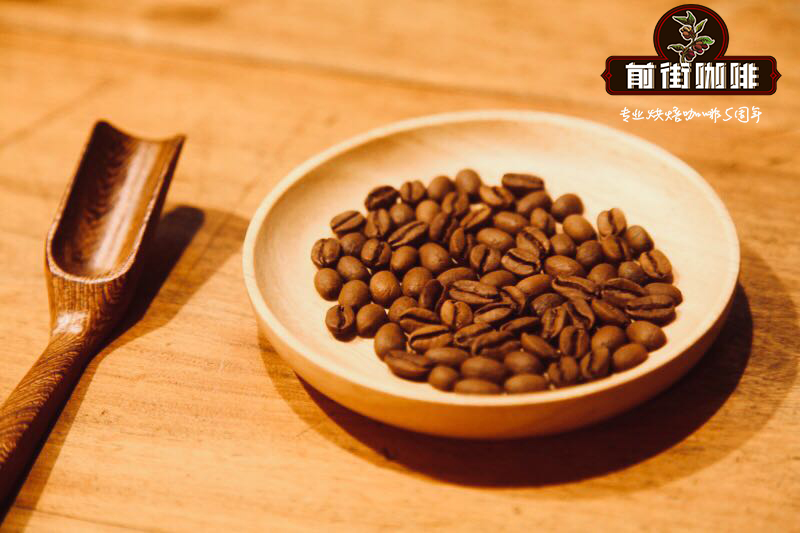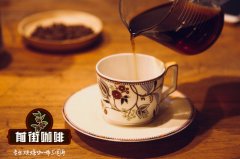Which is more caffeinated, filtered coffee or espresso? How can I drink drip coffee and how many cups can I drink?

Professional coffee knowledge exchange more coffee bean information please follow the coffee workshop (Wechat official account cafe_style)
Why is the coarse ground coffee powder suitable for trickling filter-the common grinding thickness diagram of coffee powder
How much caffeine is there in a cup of coffee?
According to the National Coffee Association (NCA), a typical cup of drip coffee (8 ounces) contains about 65-120mg of caffeine. Caffeine content varies so widely that it is difficult to assess how much caffeine you consume from typical coffee. But why such a big change?
Do not be too technical, several factors should be considered when brewing coffee, including coffee type, grinding degree, brewing time, extraction time, water temperature, baking degree, blending and other factors, all factors have an important impact on the final extraction of caffeine.
Now, if we look at the caffeine in a typical cup of drip coffee and espresso, these numbers are 92.5mg and 40.0mg, respectively, but these are averages.
As you can clearly see, about 92.5 mg of drip coffee contains more caffeine than espresso (40 mg)-how much? The average is about 2.3 times!
So we say-filtered coffee has more caffeine than espresso!
No, the right way to compare espresso with drops of coffee is to compare the caffeine concentration of the two drinks per ounce.
In the case of dripping coffee, we need to distribute 65-120 mg caffeine to its size (8 oz), about 8.1-15 mg / oz caffeine concentration. This means that for every ounce of coffee liquid, we expect about 8.1 to 15 milligrams of caffeine.
In espresso, even if we start with about 1 ounce of caffeine, all of this caffeine contains only 1 ounce of liquid, or 30-50 mg / oz in numerical terms.
In other words, in an ounce of espresso solution, we get about 30-50 milligrams of caffeine.
What's the point?
Although we can conclude that drip coffee contains at least twice as much caffeine as espresso, we need to consider that this is due to a larger milliliter.
In short, we can sum up as follows:
In terms of liquid volume, espresso has less caffeine because it is much smaller.
But in terms of volume percentage, espresso contains more caffeine than coffee because the 1oz coffee is more soluble.
Conclusion: espresso vs drip filter coffee.
Is espresso really more caffeinated than a drop of coffee?
So once again the answer depends on your point of view. If we see this problem from a:
Cup size > filter coffee has more caffeine.
Volume percentage-> espresso has more caffeine
The following picture shows the caffeine you absorb when you buy espresso (~ 1 oz) and standard coffee (8 oz). In other words, if you drink espresso, you will absorb about 30-50 mg of caffeine and 65-120 mg of filtered coffee. Of course, these are just averages, but you get the point.
* caffeine content in coffee drops (8 oz) vs espresso (1 oz) *
65-120mg (BP) (8-15/1oz) (VP)
30-50mg (bp) (30-50/1oz) (VP)
Bp-- cup volume, vp-- volume percentage
Why do people believe that espresso contains more caffeine than filtered coffee?
So part of the reason for this belief is that caffeine itself has a strong bitter taste. Because the beans used in espresso are more roasted, this produces higher concentrations of "bitter" molecules.
The logical "connection" seems to be correct-but in fact it is not.
The bitter compounds produced by deeper baking are not due to caffeine but are bitter compounds produced during the Maillard reaction.
The concentration of caffeine (per serving) in espresso is much lower, which means you can drink 5 to 10 servings of espresso a day without excessive shaking. Try a 12-ounce cup of dripping coffee and you may end up visiting the hospital because of excessive caffeine levels in the circulatory system.
Unfortunately, it is very difficult to regulate caffeine in coffee drinks because there are many variables to consider, including:
Cup size-4 oz, 5 oz, 12 oz or 24 oz?
Blending-many roasters create their own coffee mixes, each with subtle differences
Coffee bean variety-is it a blend of 100% Arabica coffee, Robusta or both?
Degree of grinding-is coffee made of fine grinding, ultra-fine grinding, roughness, etc.? (hand screen can be used to measure crushing particle size)
Water temperature-coffee brewed in the temperature range of 195-205 °F is recommended.
Milk-whether milk is added because it dilutes caffeine
Other-equipment model, residence time, etc.
All these factors make the calculation of caffeine in coffee drinks a real challenge. It is hoped that through the implementation of industry standards through trade organizations, we can also create more standard coffee cups.
Is it okay to make drip filtration with Italian beans? What's the difference between American coffee and Italian coffee beans?
Important Notice :
前街咖啡 FrontStreet Coffee has moved to new addredd:
FrontStreet Coffee Address: 315,Donghua East Road,GuangZhou
Tel:020 38364473
- Prev

HAND DRIP hand filter coffee maker accessories introduce the difference between drip filter coffee and hand brew coffee
Professional coffee knowledge exchange more coffee bean information please follow the coffee workshop (Wechat official account cafe_style) why coarse ground coffee powder is suitable for drip filter-common grinding thickness of coffee powder figure 1. Filter cup: the bottom drilled filter cup containing filter paper and ground coffee powder, placed on the coffee pot. two。 Groove line (lib): wrinkled vertical groove on the inside of the filter cup, coffee liquid extraction
- Next

Does Starbucks drink more caffeine than Starbucks drip filter coffee?
Professional coffee knowledge exchange more coffee bean information please follow the coffee workshop (Wechat official account cafe_style) why the coarse ground coffee powder is suitable for trickle-coffee powder common grinding details of American coffee gt; French filter pot gt; gt; mocha pot gt; hand-filter gt; espresso gt; ice drop coffee 1. American Coffee spot check Cafe at the University of Florida
Related
- Beginners will see the "Coffee pull flower" guide!
- What is the difference between ice blog purified milk and ordinary milk coffee?
- Why is the Philippines the largest producer of crops in Liberia?
- For coffee extraction, should the fine powder be retained?
- How does extracted espresso fill pressed powder? How much strength does it take to press the powder?
- How to make jasmine cold extract coffee? Is the jasmine + latte good?
- Will this little toy really make the coffee taste better? How does Lily Drip affect coffee extraction?
- Will the action of slapping the filter cup also affect coffee extraction?
- What's the difference between powder-to-water ratio and powder-to-liquid ratio?
- What is the Ethiopian local species? What does it have to do with Heirloom native species?

